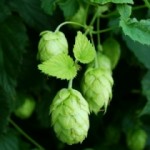Melbourne brewery’s new venue opens in former Phillip Morris cigarette factory.
The post Stomping Ground’s latest venue light ups appeared first on Beer & Brewer.
Melbourne brewery’s new venue opens in former Phillip Morris cigarette factory.
The post Stomping Ground’s latest venue light ups appeared first on Beer & Brewer.
Seven Latino men gathered on a Hacienda Heights driveway on a warm Southern California night. Shiny homebrewing equipment filled the garage so the fledgling craft brewers stood in the car port—pint glasses in hand—sharing names, hometowns and brewing experiences. The SoCal Cerveceros homebrew club was born. “We didn’t really know what it was going to […]
The post SoCal Cerveceros, America’s Largest Latino-Based Homebrew Club, Is Making Its Mark appeared first on CraftBeer.com.
 Scott Mast and Chris Vogel join me this week to discuss Great Lakes proprietary hops and the resurgence of hop growing in the Midwestern US. Subscribe on iTunes to Audio version or Video version or Spotify or Google Play Download the MP3 File– Right Click and Save As to download this mp3 file. Your browser […]
Scott Mast and Chris Vogel join me this week to discuss Great Lakes proprietary hops and the resurgence of hop growing in the Midwestern US. Subscribe on iTunes to Audio version or Video version or Spotify or Google Play Download the MP3 File– Right Click and Save As to download this mp3 file. Your browser […]  This week I take a look at how you can use a blend of hop varieties rather than a single variety to maximize your hop flavor and aroma. Why Blend Your Hops While brewers often use different hop varieties for boil hopping, whirlpool hopping and dry hopping, I was not that familiar with the technique […]
This week I take a look at how you can use a blend of hop varieties rather than a single variety to maximize your hop flavor and aroma. Why Blend Your Hops While brewers often use different hop varieties for boil hopping, whirlpool hopping and dry hopping, I was not that familiar with the technique […] “Break even” Helios Brewing now eyeing growth and profitability come July 1.
The post Excise rebate increase a ‘game changer’ for brewery appeared first on Beer & Brewer.
Some beer runs are so momentous — so essential — they deserve their own special holiday.
The post PSA: July 3 Is National Independent #BeerRunDay appeared first on CraftBeer.com.
 This week I take a look at homebrewing in the modern era, how it has developed and the impact of technology on brewing. A Quick History of Modern Homebrewing While brewing beer at home has been done for many thousands of years, the modern history of homebrewing in the US has some clearly defined dates: […]
This week I take a look at homebrewing in the modern era, how it has developed and the impact of technology on brewing. A Quick History of Modern Homebrewing While brewing beer at home has been done for many thousands of years, the modern history of homebrewing in the US has some clearly defined dates: […] Non-alcoholic craft brewery to ‘raise their goals’ after snaring Amazon grant
The post UpFlow to chase export markets after $200K win appeared first on Beer & Brewer.
This month marks 50 years in brewing for one of Australia’s true icons of beer.
The post Celebrating Chuck Hahn’s 50 years in brewing appeared first on Beer & Brewer.
Royal Albert to kick off four separate tap takeovers from Victorian breweries.
The post A Sydney pub’s plan to help out its VIC mates appeared first on Beer & Brewer.
The news comes not long after the brewery marked a successful first year in business.
The post Co-founder Fishwick leaves White Bay Beer Co appeared first on Beer & Brewer.
IBA pledges its full power to be part of the solution in wake of claims.
The post IBA responds to industry’s #MeToo reckoning appeared first on Beer & Brewer.
Much-loved event bounces back from COVID hit in an expanded format.
The post Inner west’s Beer Footy & Food festival returns appeared first on Beer & Brewer.
Balter, Kaiju! Beer and Little Bang also win Craft Beer Marketing Awards.
The post Dollar Bill add to AIBA win with global awards appeared first on Beer & Brewer.
Hop Nation lead the charge as Victorian breweries win over a third of all awards.
The post Dollar Bill and fellow Victorians win big at AIBA awards appeared first on Beer & Brewer.
Kyle Lyons takes on the role while the WA brewery make two further appointments.
The post Otherside Brewing appoints new head of sales appeared first on Beer & Brewer.
Brewery looking to attract even more buyers by releasing it in cans next month.
The post Sales of Coopers Stout reaching 70 year highs appeared first on Beer & Brewer.
Event on June 11 will include workshops, seminars and panel discussions.
The post WA’s Beer and Brewing Conference returns appeared first on Beer & Brewer.
Brewery receives $60,000 in investment pledges in 24 hours for new solar farm.
The post Young Henrys to become fully solar powered appeared first on Beer & Brewer.
Tribe extend the portfolio of their gluten free beer brand Wilde with new lager.
The post Tribe up stake in growing GF beer market appeared first on Beer & Brewer.
Brick Lane will also donate $10,500 to the organisation’s scholarship program.
The post Brick Lane, Pink Boots combine on new beer appeared first on Beer & Brewer.
BentSpoke and Malt Shovel combine again but release comes in cans for first time.
The post New BentShovel beer continues 30 year bond appeared first on Beer & Brewer.
Tekapō’s Burkes Brewing’s hazy rates among the top New Zealand beers in 2021.
The post #Fakenews is big news in Burke’s backyard appeared first on Beer & Brewer.
Brewery plans to build production facility and restaurant on rural land north of Sydney.
The post WA’s Beerfarm confirms major NSW expansion plans appeared first on Beer & Brewer.
Government increases maximum beer excise tax rebate from $100,000 to $350,000.
The post Pay day for indie brewers as excise rebate raised appeared first on Beer & Brewer.
American Craft Beer Week (May 10–16, 2021) is our annual springtime salute to our neighborhood breweries. Because Local Beer Is Better!
The post Get Ready: American Craft Beer Week Is May 10-16 appeared first on CraftBeer.com.
 Author and brewer Randy Mosher joins me this week to discuss stories and their importance in beer. Subscribe on iTunes to Audio version or Video version or Spotify or Google Play Download the MP3 File– Right Click and Save As to download this mp3 file. Your browser does not support the audio element. Topics in […]
Author and brewer Randy Mosher joins me this week to discuss stories and their importance in beer. Subscribe on iTunes to Audio version or Video version or Spotify or Google Play Download the MP3 File– Right Click and Save As to download this mp3 file. Your browser does not support the audio element. Topics in […] German-style pilsner to join the core range alongside their Pale Ale, XPA and IPA.
The post TWØBAYS meet demand for a gluten free lager appeared first on Beer & Brewer.
National retailer insights show inner west suburbs buy the most craft beer online.
The post Sydney’s inner west boosts craft beer capital claims appeared first on Beer & Brewer.
Building of 200 hectolitre brewery and visitor’s centre slated to take two years.
The post Stone & Wood’s ‘landmark day’ as $50m brewery confirmed appeared first on Beer & Brewer.